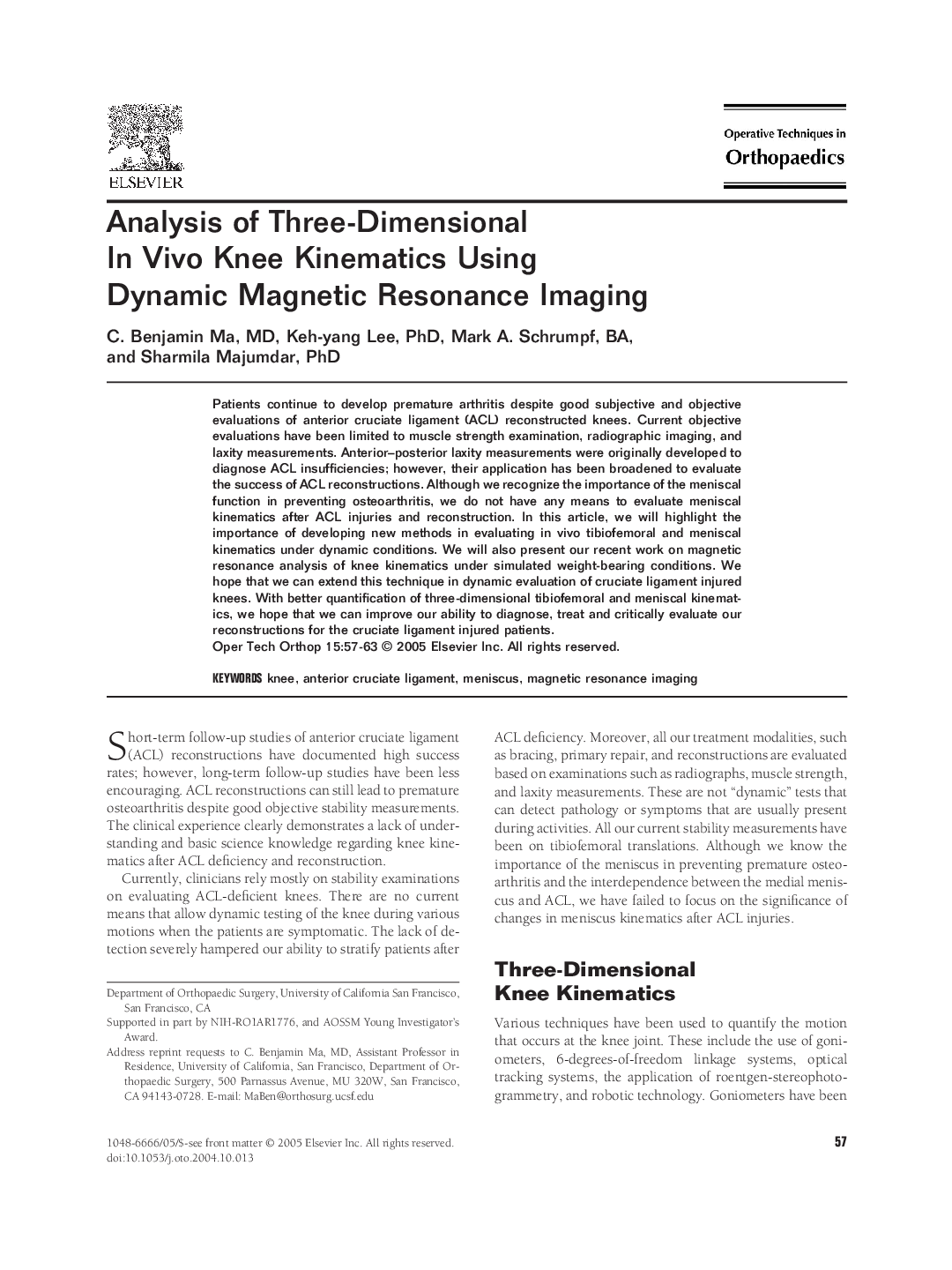| Article ID | Journal | Published Year | Pages | File Type |
|---|---|---|---|---|
| 9356721 | Operative Techniques in Orthopaedics | 2005 | 7 Pages |
Abstract
Patients continue to develop premature arthritis despite good subjective and objective evaluations of anterior cruciate ligament (ACL) reconstructed knees. Current objective evaluations have been limited to muscle strength examination, radiographic imaging, and laxity measurements. Anterior-posterior laxity measurements were originally developed to diagnose ACL insufficiencies; however, their application has been broadened to evaluate the success of ACL reconstructions. Although we recognize the importance of the meniscal function in preventing osteoarthritis, we do not have any means to evaluate meniscal kinematics after ACL injuries and reconstruction. In this article, we will highlight the importance of developing new methods in evaluating in vivo tibiofemoral and meniscal kinematics under dynamic conditions. We will also present our recent work on magnetic resonance analysis of knee kinematics under simulated weight-bearing conditions. We hope that we can extend this technique in dynamic evaluation of cruciate ligament injured knees. With better quantification of three-dimensional tibiofemoral and meniscal kinematics, we hope that we can improve our ability to diagnose, treat and critically evaluate our reconstructions for the cruciate ligament injured patients.
Related Topics
Health Sciences
Medicine and Dentistry
Orthopedics, Sports Medicine and Rehabilitation
Authors
C. Benjamin MD, Keh-yang PhD, Mark A. BA, Sharmila PhD,
